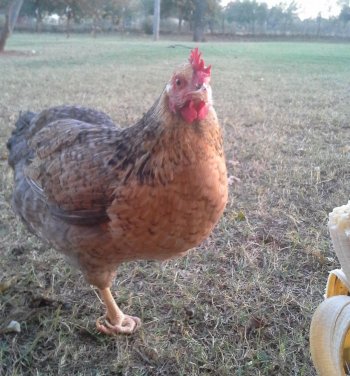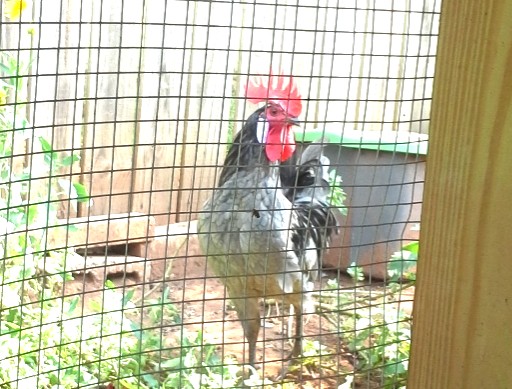If you’re a backyard chicken owner, then it’s likely that with the onset of every spring, you are familiar with the desire to purchase new chicks or chickens. This hobby can be very addictive. So this post is intended to help you know how to introduce new chickens to the flock. Because, otherwise, the new birds can upset the pecking order or bring diseases to your backyard birds.

How to Introduce New Adult Chickens to The Existing Flock
When introducing adult chickens
- Never introduce solo chickens to your flock.
Chickens can be mean. Even if you follow all of the recommendations for introducing new backyard birds, if you only present 1 chicken to your existing flock, that bird will inevitably be abused. It stands a better chance if you at least present it with one or 2 other birds. I don’t recommend adding more than that to a well established flock. This is because, more birds can greatly upset the pecking order, especially dependent upon the breeds you’re introducing. Which could cause stress in your existing hens, possibly making them stop laying eggs.
- Don’t allow the new birds around your existing members until after you’ve quarantined the newest ones.
This way you can make sure the new birds are disease and parasite free. You don’t want to possibly give the rest of your flock something. Most people recommend keeping the new birds away from your established flock for a month. But I’ve also seen numbers ranging from no less than a week to 30 days. Also, while you are monitoring the new chickens, be sure to wash your hands when going from them to the existing flock.
- Watch for pale combs and wattles, feather loss, lethargy, and scaly legs on the new members.
If you purchased the new birds from a reputable dealer, it generally isn’t necessary to isolate the birds for so long.
And then, once you’re satisfied that the new members are healthy, put them somewhere the rest of the flock can see them, and vice versa, preferably for a few days. If you can put the newbies in an enclosure, in the run, so the newbies and existing ones can observe each other, this is the ideal way for everyone to start getting to know each other without excessive violence. You want to do this for at least a couple of days. Because it helps to alleviate stress in the pecking order when the birds are finally let loose in the yard and coop.
- Finally, add the newest members, at night, to the coop.
Chickens can’t see well in the dark, so this makes it the perfect time to sneak in the newbies. Then monitor behaviors in both the new birds and existing flock the next morning.
It would be unusual if you didn’t see members of your established flock peck the newbies. This is perfectly natural and acceptable. They are establishing the pecking order with the newest members. And depending on the breed(s) of chickens you have and then recently acquired, it may be limited to only pecking here and there.
However, there are more aggressive/dominant chicken breeds. And if the newest members happen to be one of those breeds, then you might see more than pecking. That’s because those hens will more than likely want to ascend to the top of the pecking order.

If one of the birds starts bullying, and you know which one it is, then remove that bird from the group. Put her somewhere like in a cage or a separate enclosure, away from the rest of the flock, with food and water. And after a couple of days, reunite her with the group. If her behavior hasn’t changed, purchase Pinless Peepers. They sort of act as blinders for the hen’s eyes, which will prevent her from bullying.
If the whole flock (or the majority) is bullying one hen, first you’ll need to check her over for injuries. You’ll more than likely have to separate the bullied hen from everyone since there’s too many doing the bullying in this case. And usually the bullying is due to an injury or a quirk the hen has, that the rest of the flock sees as a weakness. It will continue in this situation for as long as the hen lives.

How to Introduce New Chicks to the Flock
When introducing chicks to the flock
- They should have their adult feathers. Sooner than that, they could get hypothermia.
- Most people recommend that the chicks be adult size, (so no longer chicks) before putting them in the general population.
We followed this advise with the first, second, and third set of chicks we purchased and our first set of incubated chicks. However, as we got accustomed to raising chickens and our particular birds, we stopped waiting till the chicks were full size.
I don’t suggest this until you are very familiar with your flock and know their temperament. As I mentioned above, some chicken breeds tend to be more contentious than others. So, this will dictate how and when you introduce new chicks to your existing flock.

- After their adult feathers are in, put the new chicks in a cage or an enclosure in the run. This serves the same purpose as when you’re introducing adult birds to the flock; so they can see each other.
With our second set of incubated chicks, we waited till they had their adult feathers and then brought the chicks out, in a pet cage. And then we put it in the run, so that they could see the adults, and the adults could see them. We only had 5 that time, so the cage was big enough for them. They also were protected from the adults (thus the cage), and they were protected from the elements and predators (thus the run). We did this for a few days before letting the chicks free.
We discovered that the adults didn’t pay any attention to the chicks. Because they didn’t deem them a threat to their food or position; they never attacked the chicks. It was only when the chicks got around the same size as the existing birds that the head pecking began. Also, those chicks were some of the smartest chicks we ever had. When it was time to be locked up at night, I would go out there and call them to me, to follow me, and they followed me to the coop to get locked up.
- Finally, add the chicks to the coop, in the evening. And monitor the existing flock’s behavior the next morning.
Perhaps the most important thing to be careful of when adding chicks to your backyard is predators. You have to watch out for predators for your flock already, however there will be added ones for chicks. Cats, Mississippi Kites, and crows are just a few of the creatures that will not hesitate to attack chicks, but ignore the big girls. And that is merely due to the size difference.
And if you have a rooster, you can’t rely on him to protect the chicks. If he ignores them, he ignores them. Until they get to a certain age and size, they pretty much don’t exist.

Should You Add a Rooster or Not
Now what do you do when and if you want to add another rooster? I have read other blogs that are adamantly against it, proposing that it’s impossible. Stating and affirming that there will be bloodshed if it’s even attempted. However, I’m here to refute that, because anything is possible. Take most of my roosters, for example, who have not only been introduced but lived together without actual bloodshed.
No one can actually claim that it’s impossible for roosters to get along no matter the situation. And by the same token, I can’t guarantee that all roos will get along. Just, anything is possible. But a good rule to follow is to have 10-12 hens per rooster. And that’s not to be nice to the roos; it’s for the health and safety of the girls.
Since I brought it up, introducing a rooster to the flock is similar to bringing in a new hen:
- Quarantine him for at least a week or more.
- Next, have a physical barrier, like a cage, between the flock and the new roo, so they can see each other for a few days before they are thrust together.
- Introduce the new rooster, in the evening, in the coop.
- And the following morning, monitor everyone’s behavior.

I’ve mentioned in a previous post here how our Cream Legbar roo was good with his girls relationally, but he was a coward; he’d bring danger to them while opposing us, his benefactors. So, my girls and I wanted to bring someone else in to teach him some manners. That was a joke.

We traded a couple of Black Sex-Links for a Blue Andalusian, adolescent rooster we named Starscream. We had a good number of hens, so the girls would be ok, we reasoned. And we wanted our short, scrawny rooster, Casanova, to have someone else to attack instead of us. But that didn’t quite work out the way we wanted it to; they became best buds.
We separated Starscream for the requisite amount of time, then we put him in an enclosure, so the adults could gawk and get accustomed to him. This was the only time Casanova showed true backbone as he made his rooster noises and did his rooster dances for this newcomer.
When we let Starscream out with the other birds, we thought for sure we would have just recompense on our enemy, Casanova; that the Blue Andalusian was going to solve our problems. Boy, were we wrong. Not only did he not solve our original problem, but he created another one.
That he was sexually mature was a fact, but going after the hens was not the issue; we expected that, and once again Casanova proved what a terrible rooster he was, letting this newcomer in and having his way. Yet I have a feeling it was more about self preservation than anything else. If they got into anything at that point, Casanova might win a fight, because of his spurs. And even though they were about the same height, the Blue Andalusian looked weightier than Cass. It would only be a matter of time, I was sure, before Starscream challenged him. We only had to wait, right?
Troubles with Too Many Roosters
We didn’t realize how bad things were with this new roo until one night my husband and I slept without our fan on. Starscream literally screamed (read crowed) all night long. He barely crowed at all during the day; it was like he was being respectful to Cass during the day, in front of him, while at night, he was telling everyone, especially the hens, “I’m the man, I’m the man, I’m the man!” I felt so bad for our neighbors, especially the ones who live closest to the coop.
I’m not exaggerating when I tell you that he crowed all night. All. Night. Long. It kept my husband and me up; I could only imagine the hens couldn’t sleep either. Maybe it was the name we gave him. We were asking for it, right?



We had Starscream for a month and a half to two months before we heard his ‘all-nighter’. That, coupled with the chicks we had brought in over the course of several months (4 introduced as almost adults due to their size, and 5 new adolescent chickens, including Starscream), started having an effect on our established hens and egg production, which I cover in another post. At that point something needed to be done, because he wasn’t serving a good purpose for my girls. I couldn’t continue to wait for him to challenge Casanova and possibly crow all hours of the night, stressing the hens out.
So, if you end up in a situation where your rooster or spare roo is stressing your hens out, you have a few options.
- You need to cull him. This is the fastest method of solving the problem. Although, sometimes people have a difficult time with that option. It just depends on how serious the issue is. Are your hens actually getting hurt? Because spare roosters can do that too! Is egg production down?
- Re-home him. This is the best solution. If you can find someone to take the roo off of your hands, everyone wins. Ask around and post something on Facebook; you might get lucky.
- If you can’t find someone to take him, you can always Google for animal sanctuaries. Sometimes you have to pay a small fee for them to take in the animal. But, it’s worth it.
In Conclusion
Basically introducing roosters, chicks and adult chickens is very similar. You quarantine the adults to make sure they’re not sick. But with chicks, wait until they’re feathered out. And then satisfying the requirements, you place the newbies in an enclosure separate from the established flock, where they can see each other for a few days before combining them in the coop in the evening. Have you ever had any crazy chicken introduction stories? What about chickens bullying other chickens? Your comments are appreciated.
If you enjoyed this post, please like, share, and please don’t forget to follow.


7 replies on “How to Introduce New Chickens to the Flock”
I was thinking 5 should be enough… for me at least starting out. I’ve been looking at Rhode Island Reds. Good egg layers! But I hear so much about getting too many eggs. And I think 5 might handle that.
LikeLike
We has 1 RIR and she was all business. She could’ve been boss hen if she wanted, she had the support of half the flock, much like a democracy, but she didn’t want it. All she wanted was to roam and be left alone. She was older and tired of poultry politics.
But seriously I think they’re good layers. I prefer beauty and function, that’s how I chose my birds. Unfortunately all the pretty genes go to the roosters.
LikeLike
I didn’t know chickens were political… lol
LikeLike
[…] The following Spring we decided to increase our flock. But being uncertain about the nature of how and when hens go broody, we bought an incubator and started collecting eggs. Boy, did we go overboard. I think we had around 20 eggs on the likelihood that at least half would be cockerels. And we wouldn’t keep them, as I explain why in another post. […]
LikeLike
[…] Introducing new birds, chicks figuring out the pecking order, and 2 adult roosters can and will cause some birds to seek out new territory. […]
LikeLike
[…] your existing flock, it will inevitably look like abuse. But especially if you do it too fast, only introduce one new member, or one of the chickens gets an injury or has an abnormality. Make no mistake, the chickens will […]
LikeLike
[…] prevent feather loss on your chicken’s back due to over-mating, make sure you have the proper hen to rooster ratio. Most people agree that no less than 10 hens per rooster should be the absolute […]
LikeLike